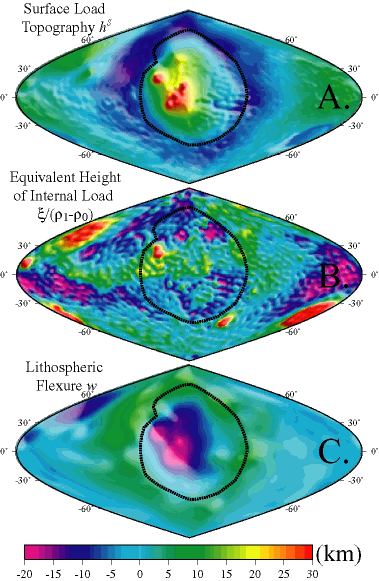Planetary Loading Processes
|
The Tharsis plateau on Mars covers one fifth of the planetary surface and has an average elevation of more than 5 km, as well as the largest geoid anomaly in the solar system. The cause of the elevated topography and geoid is controversial: Some have thought that Tharsis is a surface load accumulated by billions of years of stationary volcanic construction, while others believe the Martian surface was pushed upward by thermal and compositional buoyancy of a mantle plume, similar to topographic swells surrounding Hawaii and other terrestrial hotspots. I have developed a methodology to separate the surface and internal loading contributions to topography and the geoid, assuming a viscous planetary body with an elastic lithosphere [Lowry and Zhong, 2003]. Application of this technique to Mars Global Surveyor data indicates that between 70% and 100% of Tharsis lithospheric loading is by volcanic construction, depending on the lithospheric thickness, the mean Martian density structure, and depth of the plume buoyancy. Analysis of the coherence of the load fields (see the section on Planetary Properties) suggests that the most likely lithospheric thickness for Mars is about 110 km, with a surface density of about 2600 kg m-3. If that's correct, between 91 and 97 percent of the Tharsis topography was caused by volcanically constructed loading with an average thickness of about 17 km. |
